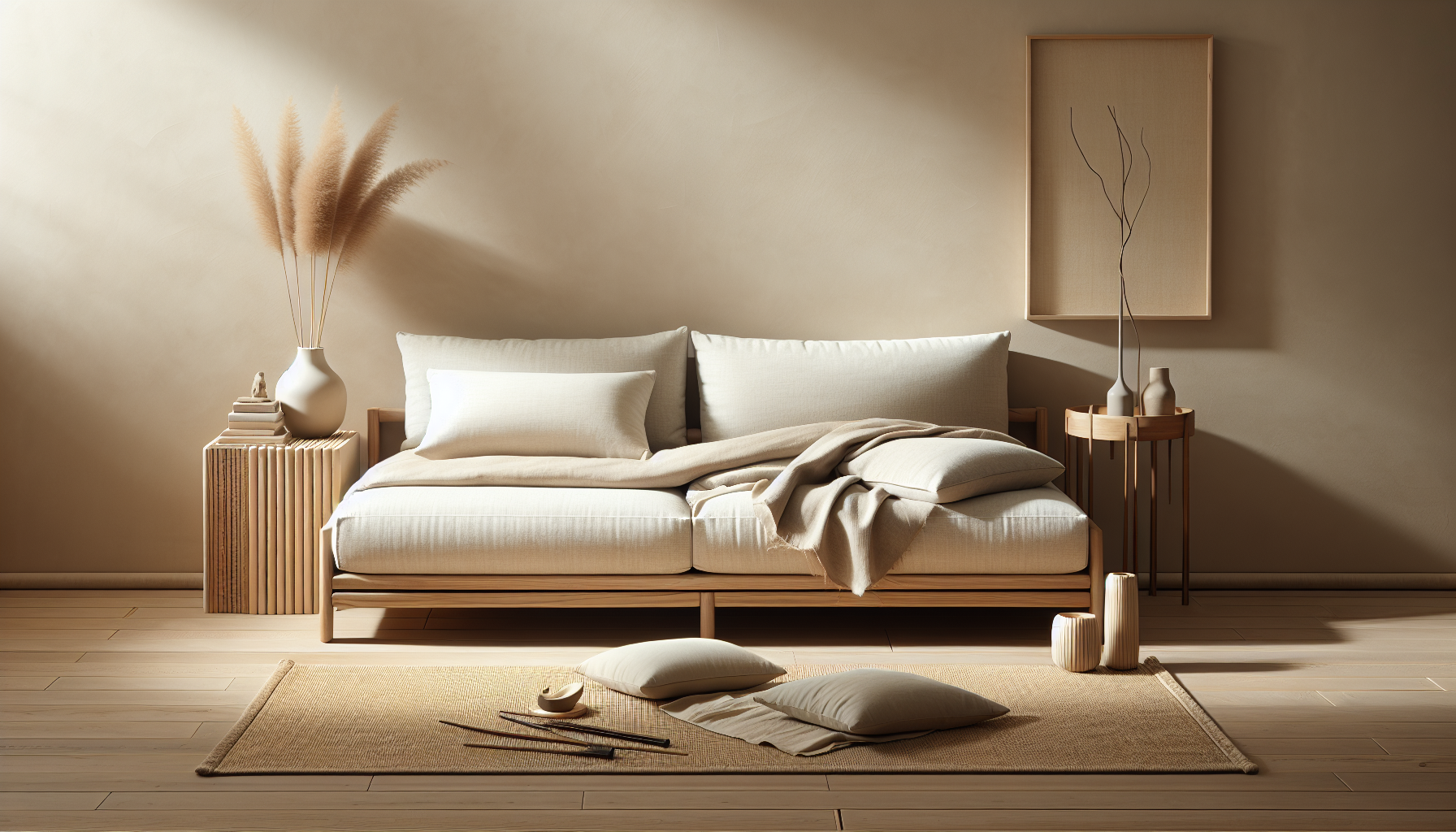Have you ever thought about how to make the most out of your living space while keeping things stylish? You might find yourself thinking about furniture that serves multiple purposes, especially in a design aesthetic like Japandi that beautifully blends Japanese minimalism with Scandinavian functionality. Let’s take an in-depth look at how you can incorporate multifunctional furniture into Japandi decor without sacrificing style or coherence.
What is Japandi Decor?
Japandi decor is a harmonious blend of Japanese and Scandinavian design philosophies. This style emphasizes simplicity, functionality, and natural materials. In Japandi, you can expect to find clean lines, muted color palettes, and an overall sense of calm and tranquility. The concept revolves around achieving a cozy yet minimalist space, which naturally lends itself to the idea of multifunctional furniture.
The Essence of Japandi Aesthetics
At the heart of Japandi aesthetics lies the idea of “wabi-sabi,” an appreciation for transience and imperfection in natural materials. You might find beautiful wooden pieces with visible grains or ceramics that highlight their hand-crafted nature. The Scandinavian aspect brings in warmth through textures and inviting vibes, making the style incredibly relatable and comforting.
The Functional Importance of Multifunctional Furniture
How can you maximize your living space and functionality while adhering to the elegant principles of Japandi decor? Multifunctional furniture shines in this area by offering several uses in one piece, saving both space and promoting a clutter-free environment. Perhaps you need a sofa that transforms into a bed or a coffee table that doubles as storage—this versatility can be especially beneficial in smaller homes.
Why Choose Multifunctional Furniture?
-
Space-Saving: In a world where living spaces are becoming increasingly limited, you may find that multifunctional pieces can help you make the most out of every square foot.
-
Adaptability: Your needs may change over time, and having furniture that can adapt to various functions can provide flexibility in your living arrangements.
-
Cost-Effective: Investing in multifunctional furniture can actually save you money in the long run, as you won’t need to buy separate items for specific purposes.
Examples of Multifunctional Furniture in Japandi Decor
Bringing multifunctional furniture into your Japandi-themed room doesn’t mean you have to compromise on aesthetics. Let’s delve into some popular options that fit this elegant design style.
Sofa Beds
A sofa bed is a classic example of multifunctional furniture that works wonders in a Japandi space. You enjoy comfort during the day as a stylish seating option, and at night, it conveniently converts to a bed for guests.
-
Design Tips: Look for minimalist designs, perhaps in neutral fabrics or natural woods, to align with the Japandi theme.
-
Placement: place the sofa bed in a spacious area, ensuring it doesn’t dominate the room but rather complements other elements.
Coffee Tables with Storage
Who doesn’t love a coffee table that can double as storage? In a Japandi living room, a coffee table with a sleek design can hold magazines, remote controls, or even blankets.
-
Choosing the Right Style: Opt for tables made from solid wood or bamboo, which can blend seamlessly into the natural aesthetic.
-
Organizing Effectively: Keep the stored items minimal and organized to maintain the clean and serene Japandi vibe.
Multifunctional Desks
As remote work becomes more prevalent, having a workspace that fits your decor without compromising aesthetics has become crucial. A desk that can be folded away or transformed can meet your work from home needs while blending into the rest of your home decor.
-
Design Elements: Selecting desks with minimalist lines and functional drawers can help keep your work items hidden away.
-
Placement Options: Consider placing your multifunctional desk near natural light sources, like windows, to not only enhance productivity but also complement the airy feel that Japandi brings.
How to Maintain the Japandi Aesthetic with Multifunctional Furniture
Incorporating multifunctional pieces into your space doesn’t mean abandoning the core principles of Japandi design. Here are some tips to maintain that tranquil aesthetic.
Stick to a Muted Color Palette
When selecting multifunctional furniture, focus on colors that match or complement your existing decor. Neutral tones, soft beige, and earthy shades can maintain balance in your space while allowing the unique features of each piece to stand out.
Choose Natural Materials
Wood, linen, cotton, and wool are key components in Japandi style. By selecting multifunctional furniture made from these materials, you ensure that your space remains cohesive. For instance, a wooden bench with storage could serve both as seating and a place to stow away shoes or blankets.
Balance Function with Form
It’s essential to find multifunctional furniture that not only serves a purpose but also looks good doing it. Strive for a balance where the practicality of the furniture doesn’t overshadow its form and beauty. For example, a stylish ladder shelf can serve as both storage and a decorative element.
Creating Zones with Multifunctional Furniture
If you live in an open space, you might be wondering how to create different zones while still maintaining a cohesive look. Multifunctional furniture can offer a practical way to do this, providing both functionality and style.
Defining the Living Area
Your living area can seamlessly integrate multiple functions, especially when you use furniture that serves more than one purpose. A sectional sofa can create a cozy seating area, while a coffee table with storage helps keep it organized.
Dedicating a Work Space
Establishing a workspace within your home requires careful consideration, especially in a compact layout. You can use a foldable desk that tucks away when not in use, allowing space to breathe while still offering functionality when needed.
Creating a Guest Space
When hosting friends and family, you may worry about space. By utilizing a plump ottoman that can double as a coffee table or even extra seating, you can invite guests over without cluttering your home.
Embracing Minimalism
A core tenet of Japandi design is minimalism, so it’s essential to embrace this philosophy when selecting multifunctional furniture.
Less is More Approach
Every piece in your home should serve a purpose. Avoid the temptation to fill every corner with furniture. Instead, invest in a few key multifunctional pieces that will truly enhance your living experience.
Thoughtful Sourcing
When you go shopping for furniture, consider sustainable options and quality craftsmanship. This not only aligns with the Japandi philosophy but also supports ethical practices in furniture production.
Seasonal Adjustments
Lastly, think about adjusting your space according to season. You can swap in a more colorful blanket in the colder months or lighter, airy pieces in the warmer months, always keeping your decor and functionality at the forefront.
Challenges and Solutions When Combining Multifunctionality with Japandi Style
While the blend of multifunctional furniture and Japandi decor is generally harmonious, you may encounter some challenges along the way. Let’s consider a few common issues and the solutions that can help.
Challenge: Clutter
One of the biggest challenges with multifunctional furniture is the potential for clutter. Multifunctional pieces can easily become catch-alls for various items.
Solution: Regularly assess and organize your furniture, maintaining a focus on minimalism. Perhaps set a monthly reminder to reevaluate your spaces, ensuring everything remains neat and tidy.
Challenge: Finding the Right Balance
It can be tricky to balance personality and functionality while maintaining the principles of Japandi design.
Solution: When choosing multifunctional pieces, keep your personal style in mind. You can select items that reflect who you are while still respecting the overall aesthetic.
Challenge: Quality Surface Materials
Not every multifunctional piece adheres to the gorgeous and timeless materials found in Japandi design, such as wood, stone, or linen blends.
Solution: Always prioritize quality over quantity. Invest in fewer but higher-quality multifunctional pieces that you’ll cherish for years rather than multiple lower-quality items that may detract from your home’s aesthetic.
Conclusion: Harmonizing Japandi and Multifunctionality
Incorporating multifunctional furniture into Japandi decor allows you to enjoy a stylish and practical living space. The beauty of this design approach lies in its ability to create tranquility while serving various functions. By carefully selecting the pieces you introduce into your home, you can achieve that perfect blend of beauty and utility.
Think about your own space—what multifunctional pieces could you integrate while preserving the serene Japandi ideals? Take your time, consider your options, and remember that the ultimate goal is to create a lovely home where functionality and beauty live in harmony.

